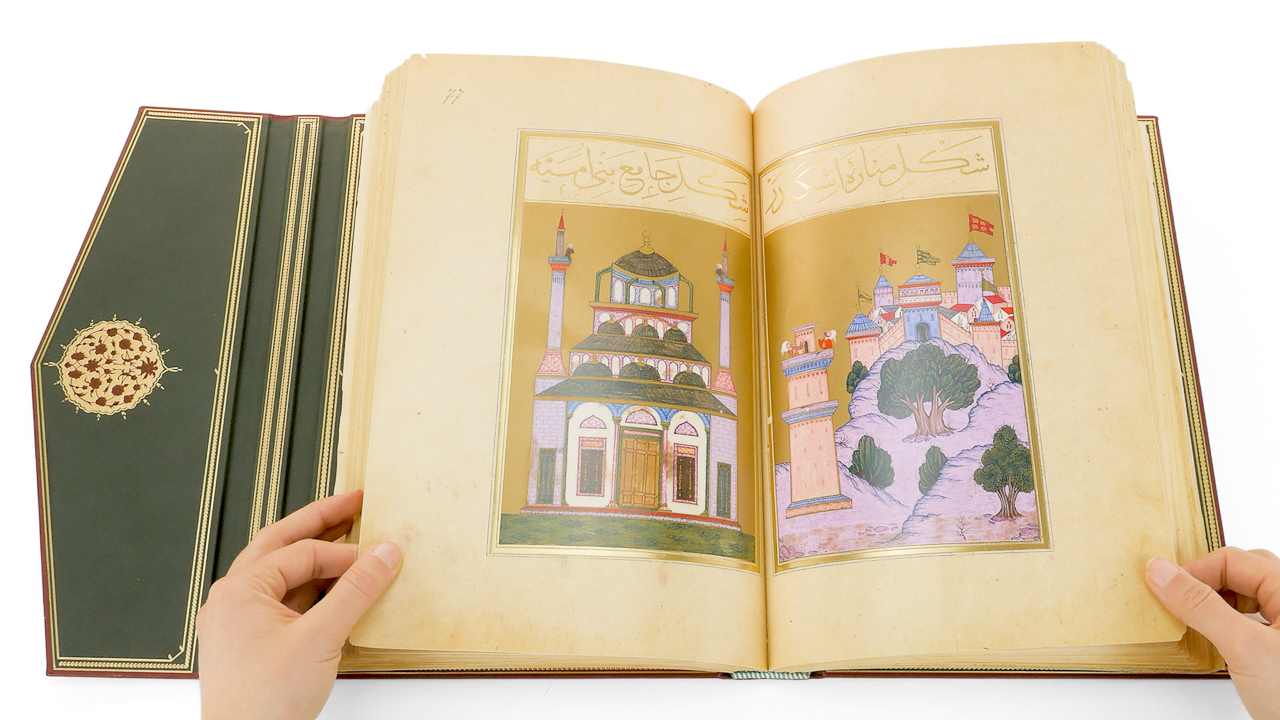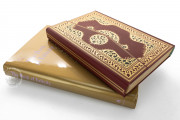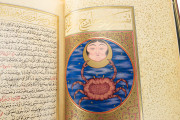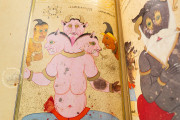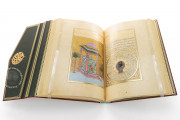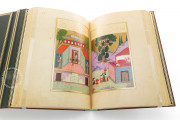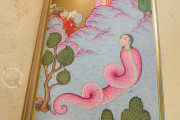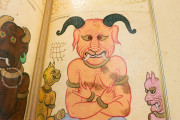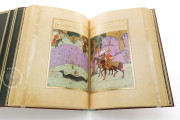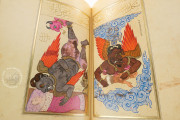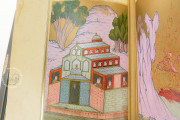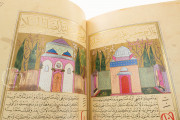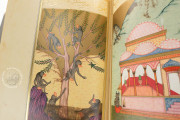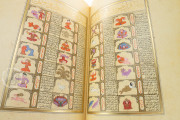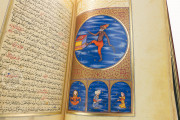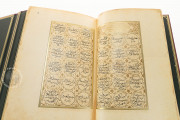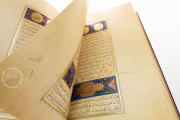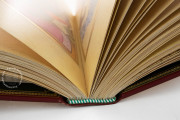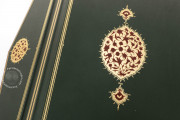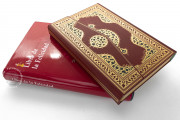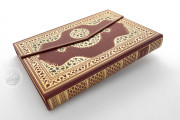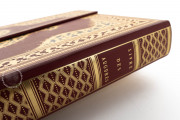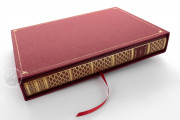The Paris manuscript of the Book of Felicity—or Ascensions of Felicity and Fountains of Sovereignty—was created in 1582 at the behest of Murad III, Sultan of the Turks, at his palace scriptorium in Constantinople. It was made for presentation to one of the Sultan's daughters, princess Fatma. The text discusses various topics relating to astrology, demonology, and human behavior. Master illuminator Osman was responsible for its seventy-one sumptuous paintings.
Although unified by the exquisite quality of its presentation, the manuscript's contents are eclectic, following its Arabic model. The first section treats the personalities and destinies of individuals depending upon their birth date (fols. 9r-32r). There follow considerations of the planets, the moon, and astrological topics (fols. 32v-74v). A third section is a series of paintings of religious buildings narrative scenes, and demons (fols. 75r-90v). The last section is devoted to fortune-telling (fols. 92v-140v).
Twin Manuscripts
The Paris manuscript is one of a pair of illuminated manuscripts of the text that the sultan had made for two of his daughters, the other being now in New York (Morgan Library & Museum, MS M.788). The text was translated into Turkish from the Arabic of a late fourteenth-century manuscript now preserved in Oxford (Bodleian Library, MS Bodley Or. 133), which also provided inspiration for the illumination.
Subjects from the Stars to Earthly Narratives
Many of the book's paintings are devoted to the celestial bodies. Most famous are the full-page renditions of the signs of the zodiac: each composition is dominated by a naturalistic representation of the sign in a brilliant blue sky with wispy clouds and gold stars. Below are images of the three planets associated with the sign's decades. These are placed within a painted frame of gold embellished with characteristic Ottoman geometric and foliate motifs.
The astrological subjects eventually give way to a pair of narrative scenes from the life of Alexander the Great (fols. 75v and 76r), and then to paintings of famous structures, including the ancient lighthouse of Alexandria (fol. 76v), and various stories, often featuring charming glimpses of contemporary daily life.
Portrait of the Sultan
The manuscript's first miniature depicts Murad seated in sumptuous garments and wearing an enormous turban (fol. 7v). Seated in a lavishly appointed room with decorated carpets and walls and stained-glass windows, he is examining with apparent satisfaction the very manuscript in which he is depicted.
An Illuminator as Scribe?
The complex relationship between the paintings and their myriad inscriptions has led to speculation that the illuminator Osman might also have been responsible for writing at least some of the manuscript's text. Whoever wrote the text, in Naskh and Muhaqqaq Arabic scripts, was extremely accomplished. The text pages—many featuring tables and diagrams in intricate configurations—are exquisitely executed in black, red, blue, and green inks, with bold headings in gold.
To Paris by Way of Cairo
While engaged in archaeological work for Napoléon I in Egypt, Gaspard Monge (1746-1818) acquired the manuscript in Cairo. He donated it in 1799 "in the name of General Bonaparte" to the Bibliothèque national, now the Bibliothèque nationale de France. It is preserved in a Turkish binding of red leather with gold tooling.
We have 1 facsimile edition of the manuscript "Book of Felicity": Libro de la Felicidad facsimile edition, published by M. Moleiro Editor, 2007
Request Info / Price
